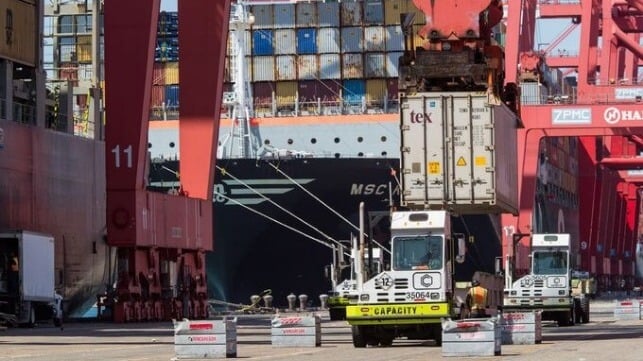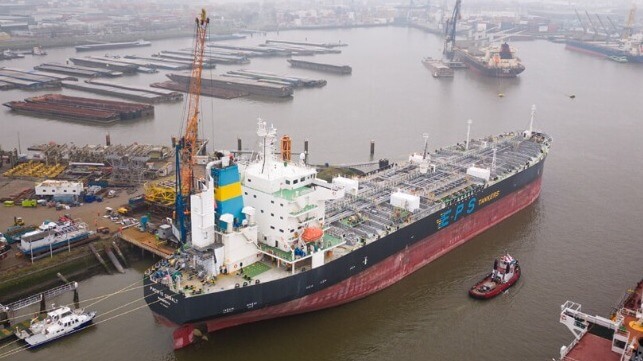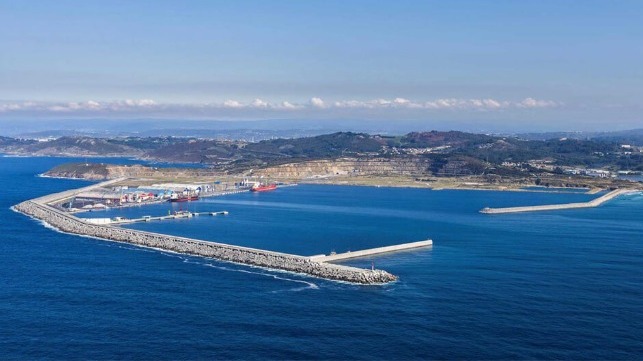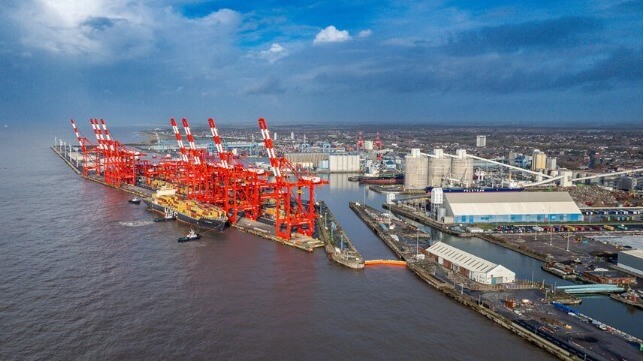Volumes at Southern California Ports Continue Strong Driven by Economy

Data for February from the southern California ports once again confirmed the continuing strength in U.S. trade and continued the positive trends in container volumes. Executives both the Port of Los Angeles and the Port of Long Beach highlighted the strong start to the year for the ports after weak 2023 volumes and the positive outlook based on the U.S. economy.
The Port of Long Beach cited cooling inflation, rising consumer confidence, and an ongoing effort to recapture market share boosted cargo shipments moving through the port in February. Similarly, the Port of Los Angeles pointed to the economy being led by job growth while noting that market confidence is strong and the cargo is flowing efficiently through the gateway.
February was the seventh month of consecutive year-over-year growth for the Port of Los Angeles. While total volume was up 60 percent over a very soft February 2023, the port also highlights that the volume is exceeding the five-year running average by 15 percent. They noted that volumes are back to pre-pandemic rates.
The growth they noted is coming in all categories for the Port of Los Angeles with a 64 percent increase in imports and a 61 percent increase in exports. It was also the ninth consecutive month of year-over-year increases in exports with the port saying that the growth was being led by volumes in agricultural products, recycled goods, and plastics.
They acknowledged that last February was softer than normal in large part due to an earlier date for the Lunar New Year but that shippers were also last year rerouting cargo away from the SoCal ports due to the protracted labor negotiations with the dock workers.
The Port of Long Beach saw similar strengths in February with an overall 24 percent increase in volumes, driven by a nearly 30 percent increase in import container volumes. Exports however lagged down 21 percent at Long Beach.
“Market confidence in our gateway is as strong as it’s ever been,” said Port of Los Angeles Executive Director Gene Seroka at today’s media briefing. “With American consumers still spending and economic indicators positive, the Port of Los Angeles is well-positioned as we move into the second quarter,” Seroka added.
He forecasted a possibly slight slowing in March with the impact of this year’s Lunar New Year celebration saying that container volumes might be around 650,000 this month. However, his overall outlook is positive with Seroka highlighting the increased movement of empties in February as shippers position boxes in Asia for future volumes. Empties volume was up 54 percent in Los Angeles last month while it was up nearly 45 percent in Long Beach.
Shippers Seroka said are closely watching the disruptions in the Red Sea/Suez Canal and the impact of the drought in Panama as well as labor negotiations for U.S. East and Gulf Coast dockworkers and the U.S. presidential elections. He said logisticians are working to determine the best routing for volumes based on the four issues overhanging the markets.
The prediction is also for a possibly slightly earlier peak season for container volumes. As in past years, shippers have advanced shipments to avoid potential delays as they also closely watch the geopolitical and other issues.
Report: Lack of Port Infrastructure Challenge Onboard Carbon Capture

A new study looking at port readiness and the challenges of handling CO2 captured from ships at sea finds that few ports are ready to handle liquified CO2 coming from ships and preparations are lacking in key areas such as infrastructure and safety training. The report concludes that low port readiness is a major hurdle bottlenecking the adoption of onboard carbon capture and storage as a practical decarbonization solution.
Capturing carbon from ships underway has been viewed as a possible technology, especially in the near term to extend the life of in-service vessels while making progress on the global goals to reduce carbon emissions. Multiple companies are moving forward with developing the onboard technology with promising results. However, the report commissioned by Singapore’s Global Centre for Maritime Decarbonization in collaboration with Lloyd’s Register and ARUP, finds a critical need to define a clear pathway to offload, utilize, and/or store CO2. They write that these critical issues need to be resolved for large-scale commercialization of onboard carbon capture and storage.
“While pilots have successfully demonstrated numerous capture technologies onboard ships, it is still uncertain how captured carbon on merchant ships can be safely offloaded, and what the rest of the value chain looks like,” said Professor Lynn Loo, CEO of GCMD. “This study sheds light on these challenges, and highlights recommendations to holistically address these concerns for parties interested in advancing OCCS/LCO2 offloading concepts.”
Aiming to address the gaps in the onboard carbon capture value chain, the study found that a limited number of ports possess the infrastructure to offload liquified CO2, which is the most promising solution for shipboard capture and storage. They write that few ports have any CO2 capabilities and the ones that do are primarily designed to handle food-grade CO2 noting that the differences in purity standards limit the interoperability of those systems with shipboard CO2.
The study reviewed 162 possible scenarios for the handling of LCO2 evaluating the options for offloading infrastructure and the safe handling challenges. They focused on four concept configurations writing that ship-to-ship or ship-to-shore transfers using an intermediate LCO2 receiving vessel are the most promising approaches for offloading at scale. Ship-to-terminal transfer they concluded is more compatible at smaller scales.
They point to the challenges of setting the end use be it eventual sequestering or use as a feedstock for manufacturing synthetic fuels. They also note that LCO2 presents a unique set of safety challenges not commonly encountered when handling fuels in shipping. The report identifies safety issues such as asphyxiation and toxicity and conducted safety studies for identifying and handling the risks.
They point to unique challenges such as the dangers as CO2 nears its triple point where gaseous, liquid, and solid phases co-exist. In addition to being sensitive to impurities, they note minor changes in temperature and pressure can lead to hazardous situations, such as blockage in pipes and a build-up of pressure.
They concluded that for onboard carbon capture systems to be operationally feasible, the industry needs to develop a collaborative ecosystem to enable the value chain for managing captured CO2.
Spain’s A Coruña Port Partners with RWE to Prep for Floating Offshore Wind

As part of Spain’s efforts to become a hub for the growing European offshore wind energy sector, the Port Authority of A Coruña in northwest Spain is joining with German energy major RWE to develop the port’s infrastructure. The Spanish port looks to become a logistic hub for the marshaling, assembly, and deployment of floating offshore wind components both to meet the country’s renewable energy goals and to support RWE which has said its goal is to lead in the development of cost-competitive, commercial-scale floating wind projects.
Working together under a Letter of Support the partners will investigate the potential for transforming infrastructure at the Port of Coruña into a logistic hub for the marshaling, assembly, and deployment of major components for commercial-scale floating offshore wind projects.
They highlight that Spain is already supplying components for offshore wind energy projects while the Spanish government is targeting 3 GW of floating offshore wind capacity by 2030. Spain plans to carry out its first auction, in the Canary region this year.
“Located on the main international maritime routes our deep water port is suitable for the marshaling, assembly, and deployment of main components, like floating substructures and mooring systems,” said Martín Fernández Prado, Executive Chairman at Port Authority of A Coruña.
The goal of the effort is to support the early development of port capacity which they believe will ensure that Spain is well placed to maximize the potential of the floating offshore wind industry in Spain, Portugal, and even at a wider European level. Last year, the DemoSATH Demonstrator was successfully commissioned two miles off the Basque coastline. DemoSATH was the first floating wind turbine connected to the Spanish grid.
“Port capacity and a sustainable supply chain industry are key to the deployment of commercial-scale floating offshore wind projects,” said Marta Carroza Diaz, Head of Floating Wind Industrialisation & Engineering for RWE Offshore Wind. That is why we support the Port of Coruña in its ambition to become a logistic hub for floating wind projects off the Spanish coast and beyond.”
RWE has already taken the first steps into floating offshore wind projects. It has already secured a commercial-scale floating wind lease off the Californian coast and is involved in two demonstration projects in Norway and Spain. The company also recently announced a partnership with Ferrovial, a sustainable infrastructure and mobility company, to jointly develop, construct, and operate floating offshore wind farms off the Spanish coast.
Port of Liverpool to Install UK’s Largest Solar Project

The Port of Liverpool is embarking on a program to enhance the sustainability of the operations of Peel Ports and continue to advance the efforts to reduce emissions around the port. The first stage of the new project plans to install the UK’s largest roof-mounted solar energy system followed by repowering existing wind turbines on the banks of the River Mersey.
This is the first stage of a 25-year agreement between Peel Ports Group, the UK’s second-largest port operator, and E.ON could see as many as 63,000 solar panels – the same areas as that of 18 football fields – installed on 26 buildings across Port of Liverpool.
The panels could generate up to 31MW of renewable electricity and provide the same amount of power as the yearly needs of more than 10,000 average UK homes. The exact number of panels and their generation potential will be confirmed in the final designs but the solar array is expected to be the largest of its kind in the UK and will generate up to 25 percent of the Port’s annual electricity needs.
The first portion of the installation, more than 6,000 solar panels, have already been delivered to the port ready to be installed on the new 240,000 square foot Alexandra Dock warehouse which is nearing completion. Minimizing disruption within the local area, the project will be wholly contained within the existing footprint of the port, using existing roof space, and bringing all equipment and technology directly to the port by sea. The project is being financed by E.ON and is due to be completed by mid-2026.
“Ports of the future need to become more sustainable environments and we must play our part in a greener supply chain,” said Claudio Veritiero, CEO of Peel Ports Group. “There is still work to do, but this project is a huge step for Peel Ports Group in cutting emissions and driving our ambition to become a net-zero port operator by 2040.”
According to Peel Ports and E.On, the solar panels will reduce CO2e emissions from within the port by more than 6,500 tonnes each year, the equivalent of taking more than 2,250 cars off the road.
E.ON has committed to using local contractors where possible and will also be looking to work with local companies for the ongoing upkeep of the 25-year period.
The second stage of the agreement will replace the five existing wind turbines at the port with four new, larger turbines generating close to 20MW. This will bring Peel Ports Group within reach of its ambition of powering the Port of Liverpool entirely by renewable energy generated on-site, including at night and over winter when the solar panels are not producing as much energy. It is expected this phase could begin as early as 2027/28 following planning consent and consultation with the local community.
No comments:
Post a Comment